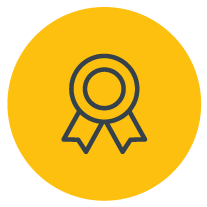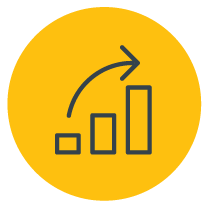
Curriculum
CDI Core Curriculum
Please note that participants must move through the program sequentially. To attend Year 2, attendees must have attended Year 1, and to attend Year 3, attendees must have attended both Years 1 and 2. To attend the Advanced Year, participants must be a CDI graduate. The complete program consists of three, one-week training sessions (hosted the first week of August each year). In addition to learning from successful practitioners, CDI also offers valuable networking and peer-to-peer learning opportunities. Each CDI site offers the core curriculum courses (listed below) in addition to other course offerings based on site needs and demographics.
All core curriculum topics are based on the Community Development Handbook, which participants are provided digitally during Year 1 of CDI (included in registration costs). The core curriculum is the foundation of the Professional Community and Economic Developer (PCED) exam. Some sites offer sessions outside of the core curriculum designated as supplementary training.
You must attend all sessions of CDI to get credit. Any absences during the week of CDI must be approved by the Director on a case-by-case basis.
Year 1 (Core Curriculum)
Year One focuses on the foundations of community development and includes group simulations providing participants with a better understanding of the challenges and benefits of a community development approach.
- Community and Economic Development Practice (Chapter 1)
- Community Asset Mapping and Assessments (Chapter 2)
- Community Strategic Visioning and Planning (Chapter 3)
- Identifying and Developing Stakeholders, Leaders, and Volunteers (Chapter 4)
- Understanding Community Economies (Chapter 5)
Year 2 (Core Curriculum)
Year Two emphasis is placed on the “nuts and bolts” of implementing economic development strategies, including business attraction, expansion and retention, and entrepreneurship. Overview of commercial and industrial development projects and group simulations are learning tools for this course.
- Building Entrepreneurial Communities (Chapter 6)
- Business Attraction and Site Selection (Chapter 7)
- Business Retention and Expansion (Chapter 8)
- Community and Economic Development Finance (Chapter 9)
- Quality of Place (Chapter 10)
To register for Year Two, participants must have attended Year 1.
Year 3 (Core Curriculum)
Year Three focus is on implementing the knowledge gained in previous years plus acquiring skills in leadership, marketing and organizing the community development effort.
- Community Leadership Development (Chapter 11)
- Marketing Your Community (Chapter 12)
- Measuring Community Progress (Chapter 13)
- Workforce Planning and Development (Chapter 14)
To register for Year Three, participants must have attended Years 1 and 2.
CDI Advanced Year
The Advanced Year focuses on the application of community and economic development principles in a real-world setting. This multiple-day training is designed for individuals who have completed all three years of CDI, however, some institutes do allow attendance by non-CDI alumni working in the field who want to stay current with trends and best practices. Completion of Advanced CDI is recognized by the CDC for education requirements, training, work experience and eligibility criteria for re-certification.



